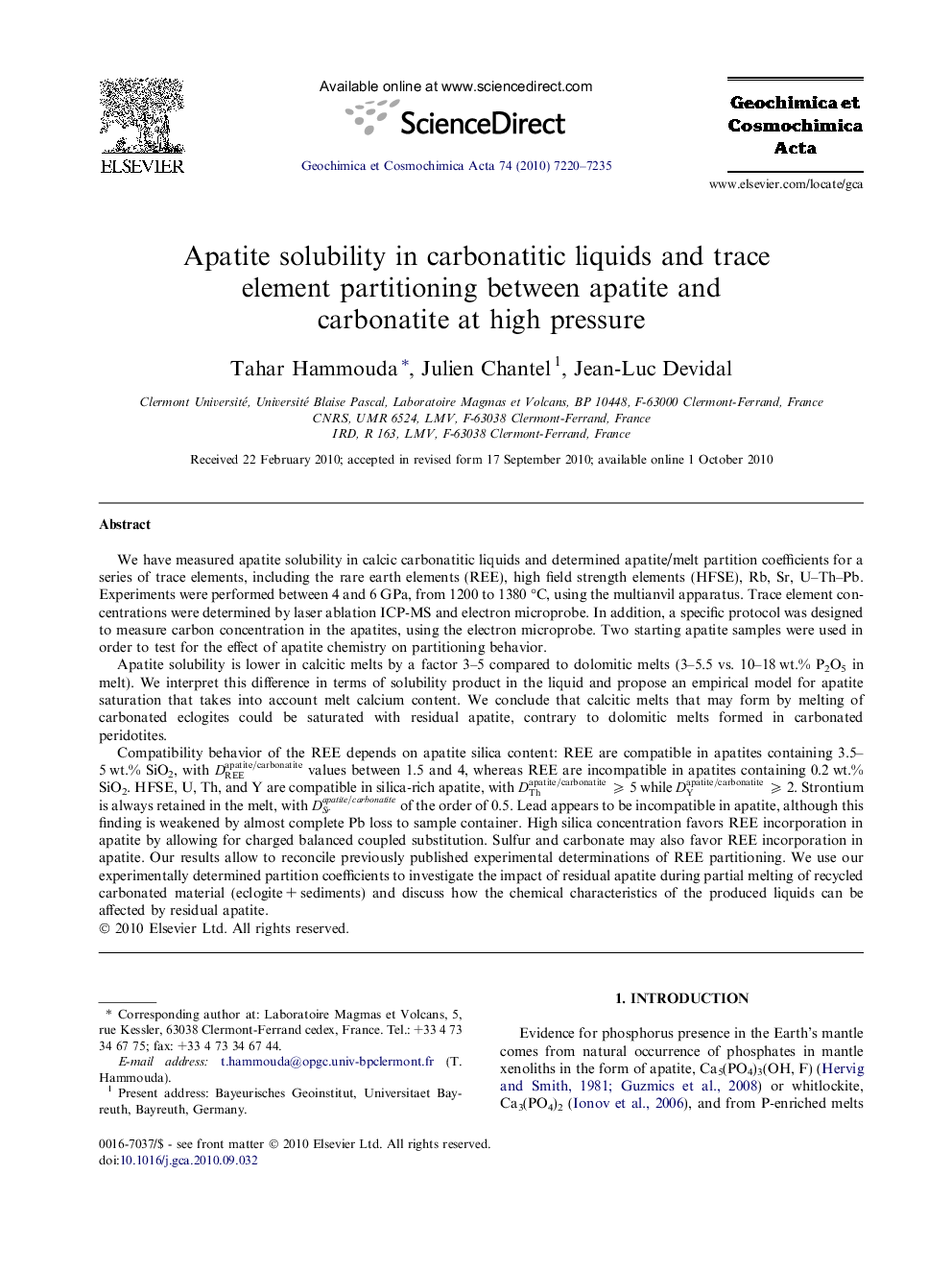| کد مقاله | کد نشریه | سال انتشار | مقاله انگلیسی | نسخه تمام متن |
|---|---|---|---|---|
| 4703539 | 1352869 | 2010 | 16 صفحه PDF | دانلود رایگان |

We have measured apatite solubility in calcic carbonatitic liquids and determined apatite/melt partition coefficients for a series of trace elements, including the rare earth elements (REE), high field strength elements (HFSE), Rb, Sr, U–Th–Pb. Experiments were performed between 4 and 6 GPa, from 1200 to 1380 °C, using the multianvil apparatus. Trace element concentrations were determined by laser ablation ICP-MS and electron microprobe. In addition, a specific protocol was designed to measure carbon concentration in the apatites, using the electron microprobe. Two starting apatite samples were used in order to test for the effect of apatite chemistry on partitioning behavior.Apatite solubility is lower in calcitic melts by a factor 3–5 compared to dolomitic melts (3–5.5 vs. 10–18 wt.% P2O5 in melt). We interpret this difference in terms of solubility product in the liquid and propose an empirical model for apatite saturation that takes into account melt calcium content. We conclude that calcitic melts that may form by melting of carbonated eclogites could be saturated with residual apatite, contrary to dolomitic melts formed in carbonated peridotites.Compatibility behavior of the REE depends on apatite silica content: REE are compatible in apatites containing 3.5–5 wt.% SiO2, with DREEapatite/carbonatite values between 1.5 and 4, whereas REE are incompatible in apatites containing 0.2 wt.% SiO2. HFSE, U, Th, and Y are compatible in silica-rich apatite, with DThapatite/carbonatite⩾5 while DYapatite/carbonatite⩾2. Strontium is always retained in the melt, with DSrapatite/carbonatite of the order of 0.5. Lead appears to be incompatible in apatite, although this finding is weakened by almost complete Pb loss to sample container. High silica concentration favors REE incorporation in apatite by allowing for charged balanced coupled substitution. Sulfur and carbonate may also favor REE incorporation in apatite. Our results allow to reconcile previously published experimental determinations of REE partitioning. We use our experimentally determined partition coefficients to investigate the impact of residual apatite during partial melting of recycled carbonated material (eclogite + sediments) and discuss how the chemical characteristics of the produced liquids can be affected by residual apatite.
Journal: Geochimica et Cosmochimica Acta - Volume 74, Issue 24, 15 December 2010, Pages 7220–7235